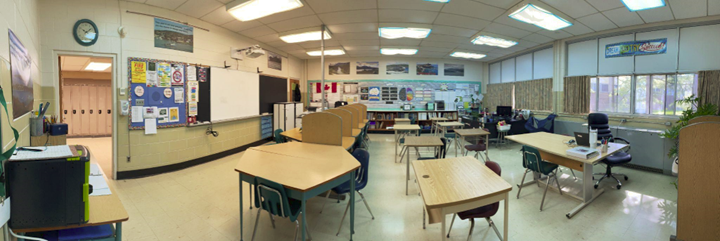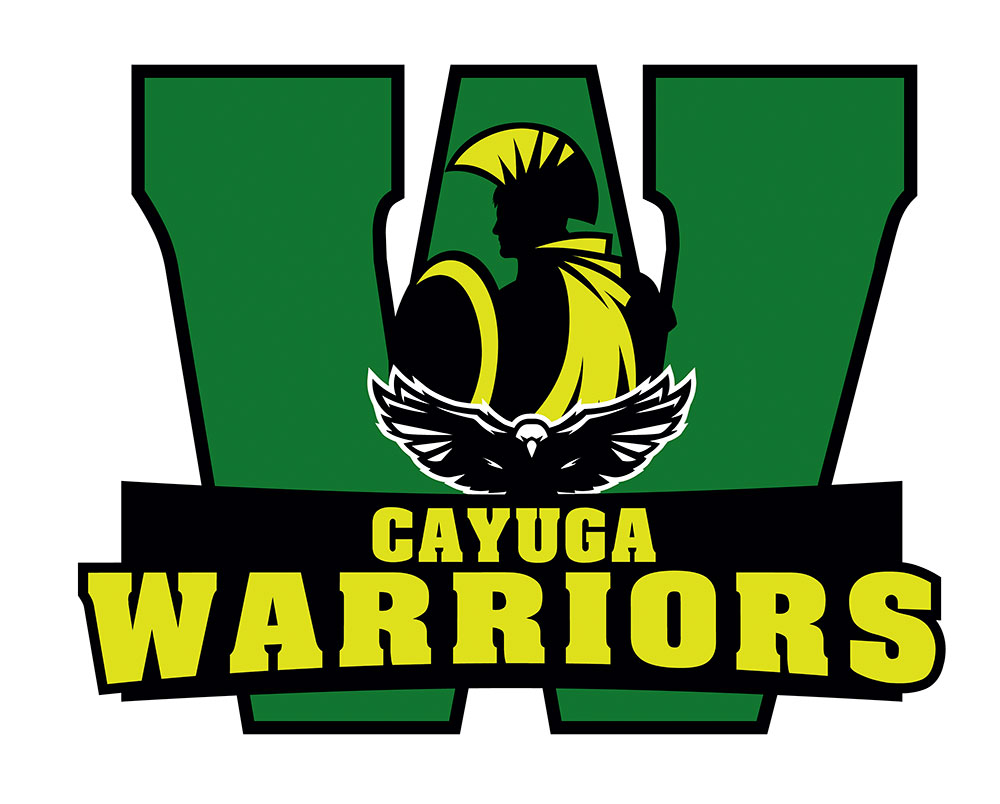Departments at Cayuga Secondary School
Construction Technology
Students at
C.S.S. can take a variety of construction and woodworking classes
beginning in grade ten. Classes are project driven with an emphasis on
hand skills, machine skills, imperial measurement, blueprint reading and
drafting.
Students who are pursuing a career in the mechanical trades can take grade eleven (intermediate) and grade twelve (advanced) electrical, plumbing and sheet metal. Sheet metal is new to our department and a significant investment has gone into tools and machines used in the sheet metal industry.
Grade
twelve construction students designed and constructed this shed in two
weeks of class time. It features a cantileverred roof over the front
doors and class designed trusses. The shed was designed to be taken
apart and transported to its destination.
As part of their final evaluation, the Grade Eleven Woodworking class was given two weeks to complete this toy truck from a blueprint. Time management, machine knowledge, and a little creativity is a big part of project completion.
Grade 10 Construction/Woodworking
- Unit 1
Basic Math for Woodworking/Drafting Basics
- Unit 2
Layout Techniques/Handtool Safety
- Unit 3
Machine Skills Safety/Blueprint Reading/and Joinery
- Unit 4
Basic Box Construction
- Unit 5
Practical Woodworking
- Unit 6
Final Culminating Activity
Electrical, Plumbing and Sheet Metal
The skilled trades have remained one of the most reliable forms of employment in Ontario since the mid 1990's. Amongst the skilled trades, plumbing, electrical and sheet metal (HVAC) rank amongst the highest paid of all the trades. All three are regulated trades requiring workers to complete a Government approved apprenticeship, a specified amount of wage earning experience, and the successful completion of a competency exam (CFQ) in order to obtain the title of "journeymen".
Our focus at C.S.S. is to expose students to some of the standards, codes, and skills required to be successful in the above trades. Co-ops are available to give students a chance to experience a potential career choice before graduation. Students can enrol in the Specialists High Skills Major program. See SHSM for more information.
For more information on apprenticeships see:
Forest to Furniture
Students in the woodworking classes receive first hand experience with the process of making lumber. Trees are gathered from several sources and brought to our school. We use our forklift to load logs onto the lumber mill safely. Then the lumber mill is operated by students who have been trained in the safe use of the machine.
Lumber is stacked and spaced with stickers to allow air to circulate and water to evaporate. The moisture content needs to be brought down to around 9% before we use it in the shop for projects. A moisture meter is used to gain an accurate reading.
Logs are generously donated by community partners. Students are learning to use the portable saw mill. One student pushes the saw through the log while others watch for any problems the operator might not see.
Boards are stacked and stickered. Stickers are the spacers between the board, which allow air to circulate and evaporate water trapped in the wood.
We use a moisture meter to measure the percentage amount of moisture in the wood. This board measures around twelve percent. Twelve percent of the weight of this board is water. We need to get it down to 9% before we can use it for projects.
Students use international standards to identify tree species and estimate the value of a standing tree.
Hairstyling and Aesthetics Classes
- By Appointment only:
Thursday & Friday 9:00am-11:30am
Cayuga Secondary High School, Room 284
70 Hwy 54 Cayuga
Ontario N0A1E0
- Phone: 905 772-3301
Ext. 729223
Manufacturing
Keep checking for more updates!
Special Education
Special Education at Cayuga Secondary School
At Cayuga Secondary School we are committed to supporting the diverse needs of all our learners through a range of inclusive and specialized programs. Our Special Education Department provides a supportive environment designed to meet students where they are and help them reach their full potential—academically, socially, and emotionally.
Self-Contained Classrooms
Our self-contained classrooms are designed to support students with a variety of learning differences, including those on the Autism spectrum. These classrooms provide a structured and nurturing environment, tailored to individual learning needs and communication styles.
Vocational Classroom
We offer hands-on vocational classroom experiences that help students build essential life and job skills. These spaces focus on preparing students for the workforce by emphasizing practical, real-world learning opportunities.
Learning Resource Room
The Learning Resource Room offers a quiet, supportive space for students who need an alternative environment to focus on schoolwork. It is also available for students requiring testing accommodations as outlined in their Individual Education Plans (IEPs). Students are also able to inquire about and store their SEA devices here. 
Student Success
The Student Success Room
The Student Success Room is a drop-in space where students can work independently or with support. Staff in this room collaborate with classroom teachers to offer student conferences, small group support, in-class support, and literacy interventions, helping students stay on track with their learning goals.
eLearning Check-Ins
For students enrolled in online courses, we offer regular E-Learning Check-Ins to ensure they are staying engaged, receiving support, and managing their time effectively. Students in eLearning are also added to the CSS eLearning support Brightspace page.
Homework Help
Our Homework Help program is available every Tuesday and Thursday from 3:00 pm to 4:30 pm. Whether students need extra assistance or simply a quiet space to complete their work, our team is here to support them.
Care Closet
The Student Success Room is also home to our school’s Care Closet full of emergency school supplies, hygiene items, and clothing.

Keep checking for more updates!



